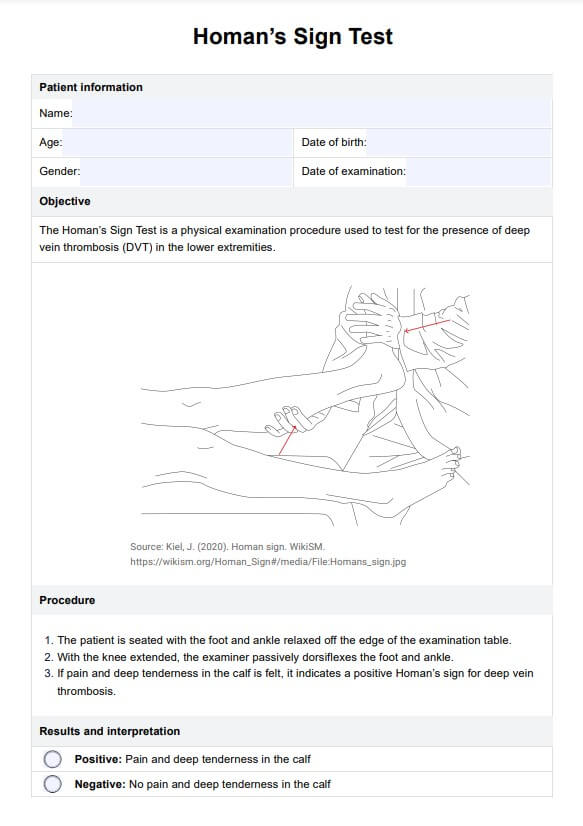The Homan's Sign Test was developed by American surgeon Dr. John Homans in the early 1900s. He introduced it as a clinical method for detecting deep vein thrombosis (DVT) based on calf pain during dorsiflexion.

Homans Sign Tests
Learn about the Homans Sign Test and its uses, and download a free PDF template for easy implementation and evaluation of patients with suspected DVT.
Use Template
Homans Sign Tests Template
Commonly asked questions
The test is scored based on the patient's reaction to foot dorsiflexion. A positive result occurs if the patient experiences calf pain, while a negative result means no pain is present.
The Homan's Sign Test is primarily used to assess for deep vein thrombosis (DVT). It checks for calf pain, which may indicate a blockage in the deep veins of the leg.
EHR and practice management software
Get started for free
*No credit card required
Free
$0/usd
Unlimited clients
Telehealth
1GB of storage
Client portal text
Automated billing and online payments











